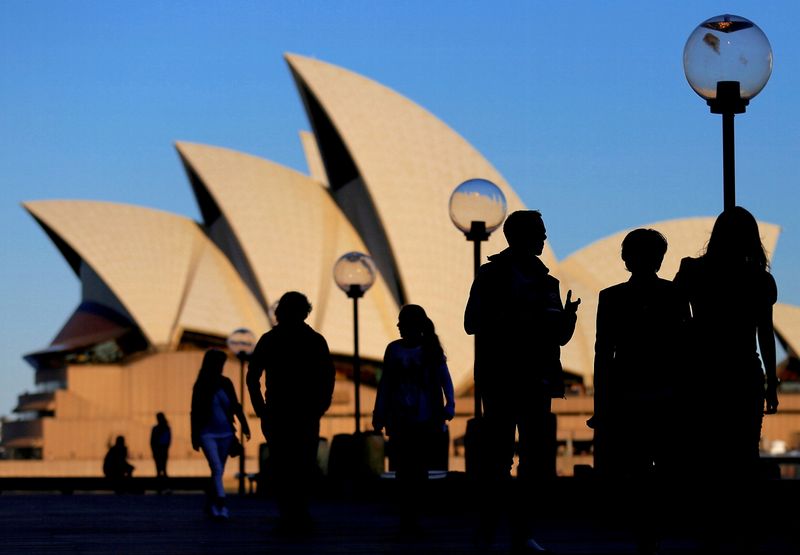By Wayne Cole
SYDNEY (Reuters) – Australian wage growth rose at the fastest pace in almost eight years last quarter as red-hot demand for labour drove unemployment to generational lows, yet pay gains still missed forecasts and lagged badly behind inflation.
Figures from the Australian Bureau of Statistics on Wednesday showed its wage price index (WPI) rose 0.7% in the June quarter, under forecasts for a 0.8% increase.
The annual rate picked up to 2.6%, from 2.4%, but again missed forecasts of 2.7%. The private sector saw growth of 2.7%, while the public payroll trailed at 2.4%.
The miss could argue for a more restrained pace of tightening by the Reserve Bank of Australia (RBA), which has worried high inflation is feeding through to pay and price setting behaviour.
Markets reacted by lengthening the odds on another half-point hike in rates by the RBA in September, while knocking the local dollar down 0.5% to $0.6992.
The central bank has already raised interest rates by 175 basis points to 1.85% since May, and flagged more hikes ahead.
Markets are wagering rates could rise as far as 3.5% by April next year given inflation has shot to a 21-year high of 6.1% and is expected to top 7% in coming months.
Still, a pick up in wage growth was at least a welcome recovery from an all-time low of 1.4% seen in late 2020 and all signs favour further gains ahead.
The jobless rate has fallen steeply to the lowest in 48 years at 3.5%, while record vacancies point to still-strong demand for workers.
Business surveys show firms struggling to find suitable staff and having to pay up to attract and retain them.
The official wage data tends to shift slowly as Australia has a system of sector-wide enterprise pay agreements that only roll over every two or three years.
The RBA’s own liaison with businesses found over 60% expected to lift wages by more than 3% in the year ahead, leading the bank to forecast the official measure of wage growth would accelerate to around 3.75% by late 2024.
Those on the minimum wage also got a major boost in June when they were awarded a pay rise of 5.2%, a bump that will only start to show in the September-quarter wage numbers.
“The strong minimum wage hike will result in a 1.1% jump in wage growth this quarter, which would lift annual wage growth above 3% for the first time since 2013,” said Marcel Thieliant, a senior economist at Capital Economics.
“And with the labour market continuing to tighten, we expect wage growth to climb to 3.5% by mid-2023.”
(Reporting by Wayne Cole; Editing by Tom Hogue and Sam Holmes)
